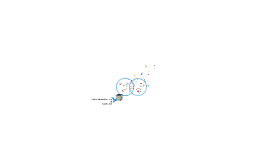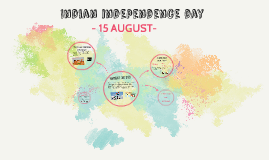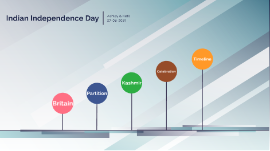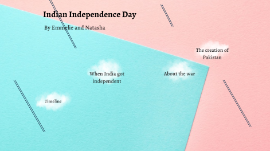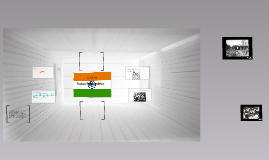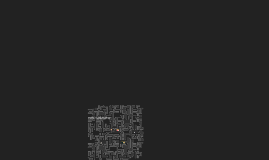Indian Independence Day
Transcript: By Emmelie and Natasha Indian Independence Day Timeline Timeline In 1885, The Indian National Congress was founded. In 1857, the independence movement started to unfold, and the first militant uprisings against British rule had started. In 1920, Mahatma Grandhi was established as the leader of the Indian independence movement. In 1942, 2.5 million Indian troops helped Britain in Second World War, and in return they would get an Independent India. In 1947, the division between Pakistan and India came into force. In Aug. 14, 1947 and the following months, 15 million Muslims, Hindus and Sikhs, was swapping countries, because of discrimination. In 1950, the constitution was created. In 1956, the constitution was employed. When India got independent When India got independent At first India was under British rule, but India had a big demand about being independent. After second world war, was Britain weakened and they couldn't resist the demand any longer. Every year on August 14th, Pakistan celebrate independence day. However India celebrates it on August 15th. The reason is , that the viceroy of Britain India, had to be a part of both celebrations, and therefor India had to wait for him, and then celebrate. Pictures Pictures About the war About the war The war started in 1947. And there has been 3 wars since that time. 2 of the 3 wars was about getting control over the area Kashmir. Today both countries administer part of it, and China also have control over a little part of it. The creation of Pakistan The creation of Pakistan The leader of the Muslim League, Mohammad Ali Jinnah, wanted the Muslims to have their own state, and India got split up in two countries, and the new muslim country Pakistan was created. The huge problem that followed, was that there was millions of muslims that lived on the Hindu-majority India, and the other way around in Muslim-majority Pakistan. That led to cost many million lives






